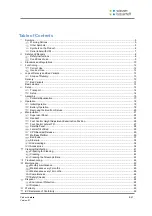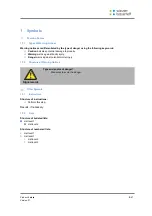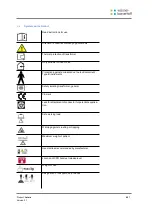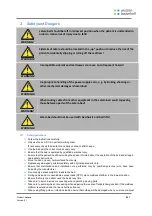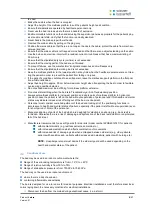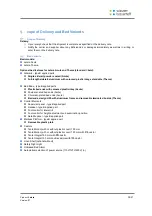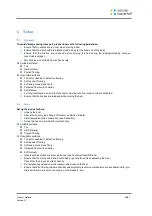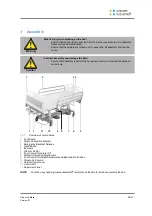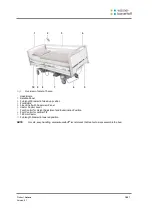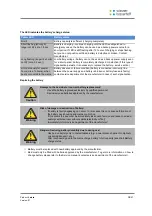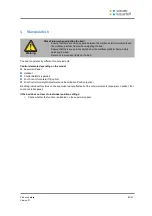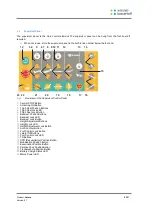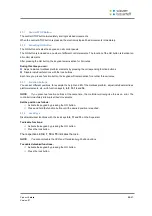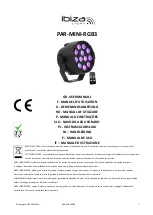
Product:
Latera
Version: 01
9
/57
the bed.
Brake the castors when the bed is occupied.
Adjust the height of the mattress platform to suit the
patient’s height and condition.
Ensure that siderails are operated by healthcare personnel only.
Never use the bed in areas where there is a hazard of explosion.
Enable or disable functions on the handset using the supervisor panel as appropriate for the
patient’s phy-
sical and mental state. Verify that the function is actually disabled.
Never handle the mains plug with wet hands.
Remove the mains cable by pulling on the plug only.
Position the mains cable so that there are no loops or bends in the cable; protect the cable from mechani-
cal wear and tear.
Ensure that the mains cable is not trapped or crushed and that there are no objects standing on the cable.
Use the bed on an electrical circuit with a residual-current circuit-breaker that has a maximum rating of
30 mA only.
Ensure that the stipulated duty cycle (on-time) is not exceeded.
Ensure that the moving parts of the bed are not blocked.
To prevent failures, use
the manufacturer’s original accessories and mattresses only.
Ensure that the stipulated safe working load is not exceeded.
Keep the mattress platform in the lowest position at any time when the healthcare personnel are not trea-
ting the patient in order to prevent the patient from falling or injuries.
If the patient's condition could lead to an entrapment, leave the mattress support platform in the flat posi-
tion whilst unattended.
Adjust bed height to approx. 20 cm below maximum height when transporting the bed in order to facilitate
overcoming possible obstacles.
Do not exceed maximum load of 80 kg for mattress platform extension.
Do not use lateral tilting when the bed is in Trendelenburg or Anti-Trendelenburg position.
Always set mattress platform to its lowest position and single parts of mattress platform to horizontal
position in case the patient is left on the bed without supervision of personnel and if his health and mental
status may indicate increase risk of falling out of the bed or entrapment.
Personnel must consider overall adjustment of the bed and locking all of the positioning functions in
accordance to health and mental status of patient, especially if the patient is left without supervision (even
for short period of time) of the personnel.
Manual positioning of parts of the bed which are designed for electronic positioning (e.g. back rest) is
forbidden. Otherwise there is a risk of damaging and dysfunction of the back rest actuator or unprompted
fall of the back rest.
Manufacturer recommends to use soft guards for side rails (model number 4PRS6012747) for patients:
with mental disorders (e.g. restless patients, dementia etc.)
with increased medication which affects coordination of movements
with increased risk of damaging skin when entrapped between side rails (e.g. older patients,
patients with sensitive skin, patients with decreased skin elasticity, patients with burning etc.)
NOTE:
Hospital personnel must decide if the side rail guard will be used depending on the
health and mental status of the patient.
Conditions of use
The bed may be used in an indoor environment where the:
Range of the surrounding temperature is from +
10°C to + 40°C
Range of relative humidity is from 30% to 75%
Range of atmospheric pressure is from 700 hPa to 1060 hPa
The bed may not be used in an indoor environment:
where there is a risk of explosion
containing inflammable anaesthetics
The bed is designed for use in rooms for medical purposes. Electrical installations must therefore meet local
norms laying down the necessary conditions for electrical installations.
Disconnect the bed from the mains during exceptional cases. (i.e. a storm).



